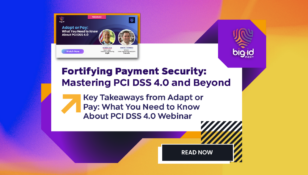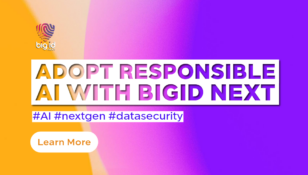4 DSPM Strategies for the Ultimate Data Protection
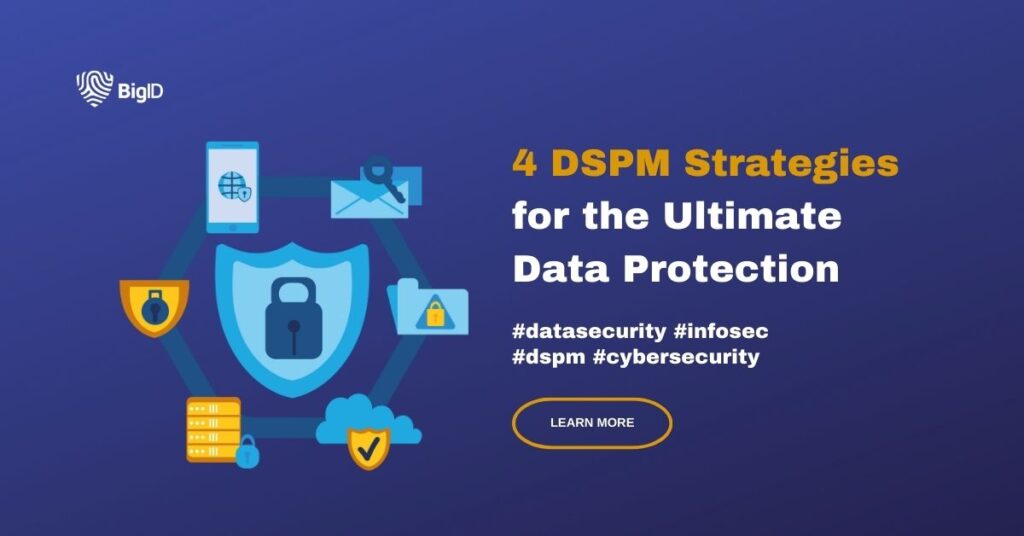
Even though the value of data for organizations across all industries is considered the most valuable asset, its value should align with how well that data is protected. However, as data proliferates in volume and sensitivity, it also presents a growing challenge in terms of security. With organizations increasingly adopting cloud environments, data protection’s complexities have multiplied. While essential, traditional security models are no longer sufficient to safeguard data across diverse multi-cloud and hybrid environments.
Data Security Posture Management (DSPM) is now critical to any enterprise cybersecurity strategy. Our recent research study, “2024 CISO Report: The Current State of Data Security, Governance, and AI,” revealed that 73% of CISOs struggle to manage their data scattered across various platforms and cloud environments, making it challenging to maintain visibility, control, and ensure compliance. DSPM has become the solution to this dilemma as it serves as a strategic holistic approach to managing and securing data across its entire lifecycle, from creation and storage to access and deletion.
Let’s explore four key DSPM strategies that can help your organization get the ultimate data protection to mitigate risk.
1. Comprehensive Data Discovery and Classification
The Importance of Knowing Your Data
The first and most critical step in any DSPM strategy is comprehensive data discovery and classification. In a multi-cloud environment, data can be scattered across various locations, making it challenging to track and protect. Without a clear understanding of where your data resides and what type of data you possess, it is impossible to secure it effectively.
Implementing a Discovery and Classification Framework
A robust DSPM strategy begins with implementing automated tools for data discovery across all cloud environments. These technologies should be capable of scanning and identifying data in structured and unstructured formats, including databases, file systems, and cloud storage. Once discovered, data should be classified based on its sensitivity and regulatory requirements.
For instance, personally identifiable information (PII), financial records, and intellectual property should be categorized as high-risk data, requiring stringent security controls. Classification should be dynamic, meaning it adjusts as data moves, changes, or its sensitivity evolves.
Effective Data Discovery and Classification with BigID
BigID’s Data Discovery and Classification empowers organizations with advanced customizable classifiers powered by AI and ML to identify, catalog, and classify more data types, more accurately, at the enterprise scale – across the entire data environment, whether on the cloud or on-prem. BigID applies intelligent classification techniques to accurately classify data by sensitivity, policy, or other attributes, which enables organizations to identify, organize, protect, manage, and report on data throughout their lifecycle to meet regulatory compliance and other business needs.
BigID Benefits
- Enhanced Visibility: Gain a clear understanding of your data landscape.
- Achieve Regulatory Compliance: Achieve compliance with data protection regulations like GDPR, CCPA, and HIPAA.
- Improved Risk Management: Focus resources on protecting the most sensitive and high-risk data.
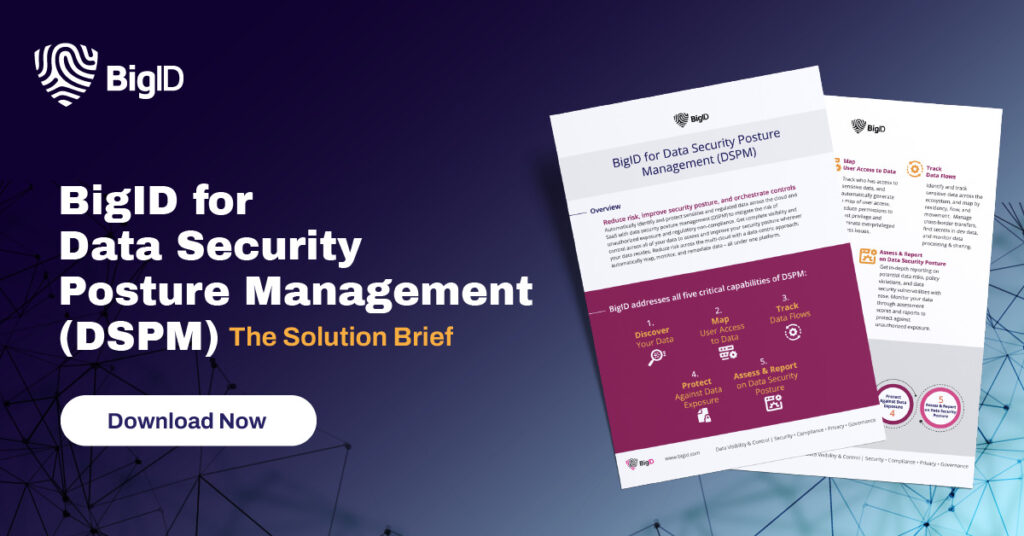
2. Data Monitoring and Alerts
The Necessity of Ongoing Monitoring
The world is a living, breathing, fast-paced technological environment, and data security, like NYC, never sleeps—it requires constant vigilance. Continuous monitoring involves assessing data activities to detect potential vulnerabilities and threats before they escalate into cybersecurity incidents and data breaches.
Implementing Data Monitoring Systems
Integrating DSPM solutions with your cloud environments allows you to monitor data flows — including tracking who accesses data, what actions they perform, and where data is transferred. Organizations can use Artificial Intelligence (AI), advanced analytics, and machine learning (ML) to identify patterns that indicate potential cybersecurity incidents, such as unauthorized access, abnormal data transfers, or attempts to exfiltrate sensitive data.
The most crucial aspect of any cybersecurity strategy is monitoring risk with alerts. Automated alerts should be customizable to notify the appropriate teams based on the severity of the potential vulnerability. For example, suspicious login attempts may trigger a low-level alert, while large-scale data transfers might trigger a high-severity alert that demands immediate remediation.
Data Monitoring and Risk Alerts with BigID
BigID enables you to identify, track, monitor, and alert on sensitive data across the entire ecosystem and map data by residency, flow, and movement. Automatically orchestrate remediation for high-risk data and enforce controls over sensitive data with triggered alerts and workflows based on cybersecurity incidents, vulnerabilities, and activities. With BigID, organizations can manage cross-border transfers, find secrets in dev data, and monitor data processing & sharing.
BigID Benefits:
- Proactive Risk Detection: Identify and mitigate risks before they lead to data breaches.
- Incident Response: Accelerate response times by providing real-time insights into cybersecurity events.
- Compliance Maintenance: Enable compliance with cybersecurity requirements and privacy regulations.
3. Automated Policy Enforcement
The Challenges of Manual Policy Enforcement
Manual processes and enforcement of data security policies can be labor-intensive, error-prone, and inefficient, particularly in complex cloud environments. As organizations scale, the sheer volume of data and the number of access points make manual oversight impractical. Moreover, human error can introduce risks such as misconfigured access controls or overlooked data transfers.
Automating Policy Enforcement
Automated policy enforcement is the cornerstone of effective DSPM. By automating the application of security policies, organizations can streamline processes to ensure that data is secured according to established rules and regulatory requirements. DSPM tools can automatically enforce policies across various environments, ensuring uniformity and reducing non-compliance risk. These policies may include encryption, access controls, data retention, and deletion.
Automated Policy Enforcement with BigID
BigID’s pre-built sensitivity classification and security policies align with regulatory compliance and frameworks such as NIST, HIPAA, CISA, GDPR, CCPA, and PCI, enabling effective management and protection of the correct data. With BigID, you can enforce and manage hundreds of out-of-the-box policies to monitor data by sensitivity, regulation, residency, location, and more. BigID helps to reduce policy-based risk by automatically detecting and remediating data risk with audit trails and reporting to integrate into custom risk assessments.
BigID Benefits:
- Consistency: Ensure uniform application of security policies across all data environments.
- Efficiency: Reduce the time and resources required for manual oversight.
- Error Reduction: Minimize the risk by reducing human error in policy enforcement.
4. Integrating DSPM with Cloud Security Platforms
The Need for a Unified Security Approach
An effective DSPM strategy should not operate in a silo. To maximize the effectiveness of DSPM solutions, organizations must integrate with broader cloud security platforms, creating a cohesive security ecosystem that spans all aspects of data protection. This integration allows for a more unified approach to securing data, combining the strengths of DSPM with other security disciplines.
Creating a Cohesive Security Ecosystem
Integrating DSPM with other enterprise security tools such as Cloud Security Posture Management (CSPM), Security Information and Event Management (SIEM), Identity and Access Management (IAM), Endpoint detection and response (EDR), and Data Loss Prevention (DLP) provides a multi-layered defense strategy. This approach ensures that data security is considered at every stage, from access management to threat detection and incident response.
For instance, CSPM can secure cloud infrastructure by identifying misconfigurations, while IAM ensures that only authorized users can access sensitive data. DSPM adds another layer of protection by monitoring data activities and enforcing policies. The integration of these platforms allows organizations to strengthen their security posture while benefiting from the scalability and flexibility of the cloud.
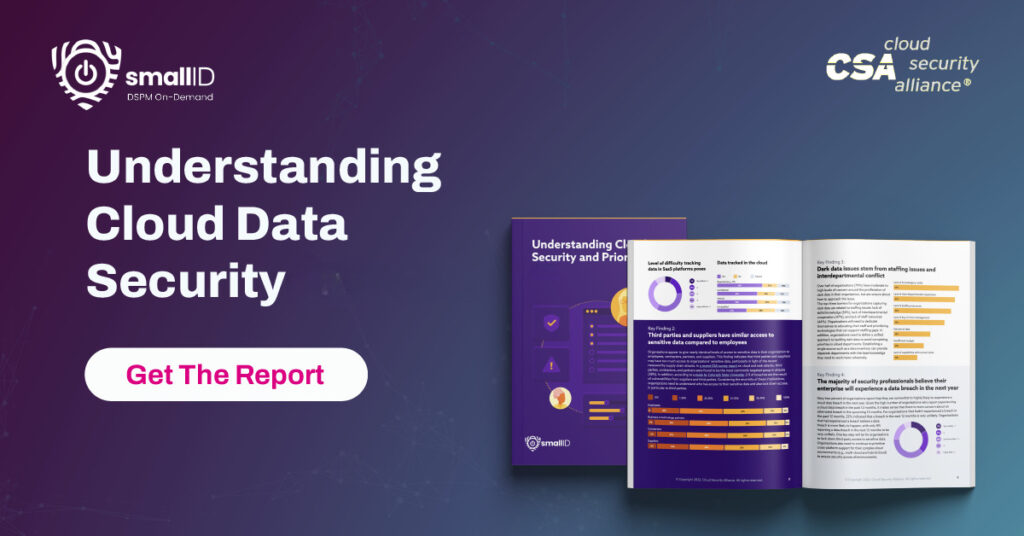
Integrating BigID with Cloud Security Platforms
BigID’s API-first, open ecosystem provides interoperability and flexibility across an organization’s technology stack. With BigID, you can seamlessly extend and enrich existing security, privacy, management, and compliance solutions and workflows, including SIEM, SOAR, DLP, CASB, labeling frameworks, data catalogs, and more. Enrich your existing tech stack with more native integrations with our partner ecosystem – from Snowflake to ServiceNow, Collibra to Alation, SOAR playbooks, and endpoint solutions.
BigID Benefits:
- Enhanced Visibility: Gain a comprehensive view of your security posture across cloud environments.
- Streamlined Operations: Simplify security management by integrating DSPM with existing tools.
- Holistic Protection: Ensure that all aspects of data security are covered, from infrastructure to application-level threats.
DSPM Can Elevate Your Data Security Strategy
As organizations evolve and transition to the cloud, robust data protection strategies become more critical than ever. Data Security Posture Management (DSPM) offers a comprehensive approach to safeguarding data across its lifecycle, ensuring that organizations can protect their most valuable assets while complying with regulatory requirements.
By implementing the four DSPM strategies —comprehensive data discovery and classification, continuous monitoring and real-time alerts, automated policy enforcement, and integration with cloud security platforms—your organization can achieve the ultimate data protection with BigID.
Reduce risk, improve security posture, and orchestrate controls with the first and only DSPM: test it out here, or get on a 1:1 demo with our security experts to learn more.




